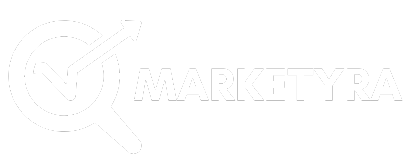On this page you will read detailed information about Key Digital Marketing Metrics.
In the ever-evolving realm of digital marketing, mastering the language of metrics is crucial to your success. As you navigate through the complex landscape of online advertising, understanding key terms such as Call-to-Action (CTA), Click-Through Rate (CTR), Cost Per Click (CPC), and Cost Per Mille (CPM) becomes indispensable. These metrics, along with concepts like impressions, retargeting, cookies, and velocity, form the backbone of effective digital strategies. By delving into these essential components, you equip yourself with the knowledge to optimize campaigns, enhance customer engagement, and ultimately drive business growth in an increasingly competitive digital world.
What is CTA and Why It Matters in Digital Marketing
Understanding Call to Action (CTA)
In the realm of digital marketing, a Call to Action (CTA) is more than just a directive; it’s a strategic prompt designed to elicit an immediate response from your audience. Typically found in the form of buttons, links, or compelling phrases, CTAs guide users towards a specific action, such as subscribing to a newsletter, downloading a resource, or making a purchase.
A well-crafted CTA does not merely tell the audience what to do; it informs them how to do it, seamlessly steering them through the customer journey. By clearly defining the next step, CTAs reduce friction and enhance user engagement, effectively converting passive visitors into active participants.
The Importance of CTAs in Digital Strategy
The importance of CTAs in digital marketing cannot be overstated. At their core, they are essential tools for driving conversions and measuring campaign success. An effectively placed CTA can significantly enhance your click-through rates (CTR), which is a critical metric for gauging the effectiveness of your marketing efforts.
Moreover, CTAs serve as a bridge between your content and the desired outcome. Whether your goal is to increase website traffic, generate leads, or boost sales, a strategic CTA can significantly amplify your results. For example, including a persuasive CTA at the end of a blog post can lead to increased engagement, as readers are more likely to take action after consuming valuable content.
Crafting Effective CTAs
Creating a powerful CTA requires a blend of creativity and precision. It is vital to use action-oriented language that resonates with your target audience. Words like “Discover,” “Start,” or “Join” can instill a sense of urgency and entice users to act promptly. Additionally, ensuring that CTAs stand out visually through contrasting colors and strategic placement can enhance their effectiveness.
Ultimately, the significance of a well-designed CTA lies in its ability to transform interest into action. By strategically crafting CTAs that align with your marketing goals, you can drive meaningful interactions and achieve measurable success.
CTR: Click-Through Rate
What is Click-Through Rate?
At its core, the Click-Through Rate (CTR) is a pivotal digital marketing metric that measures the success of your online advertising campaigns. It is calculated by dividing the number of clicks your ad receives by the number of times your ad is shown (impressions), expressed as a percentage. For instance, if your ad is displayed 100 times and receives 5 clicks, your CTR would be 5%. This seemingly simple metric serves as a barometer for the effectiveness of your ad in capturing the audience’s attention and prompting action.
Why CTR Matters
Understanding CTR is crucial because it directly reflects how well your ad resonates with your target audience. A high CTR indicates that your audience finds your ad compelling and relevant, leading them to click through to your landing page. Conversely, a low CTR may suggest that your ad is not engaging or targeting the right audience. CTR is more than just a number; it’s an indicator of your campaign’s alignment with user intent and interests. Moreover, platforms like Google Ads often use CTR to determine the quality score, affecting the cost and position of your ads.
Strategies to Improve Your CTR
Improving your CTR involves a blend of creativity and analytics. Start by crafting compelling ad copy that speaks directly to your audience’s needs and desires. Employing strong call-to-action (CTA) phrases like “Discover Now” or “Learn More” can spur immediate engagement. Additionally, A/B testing various ad elements, such as headlines and visuals, can illuminate what resonates best with your audience. It’s also beneficial to fine-tune your targeting options, ensuring your ads reach the most relevant users. Remember, a personalized approach often yields higher engagement.
In summary, CTR is a key performance indicator that provides invaluable insights into the effectiveness of your advertising efforts. By understanding and optimizing this metric, you can enhance your campaign’s impact, ultimately driving more conversions and achieving your marketing objectives.
CPC: Cost Per Click
The Basics of CPC
Cost Per Click (CPC) is a fundamental metric in digital marketing that quantifies the amount you pay for each click on your ads. It’s a crucial element in pay-per-click (PPC) advertising campaigns, determining the cost-effectiveness and efficiency of your digital marketing efforts. Essentially, CPC measures the financial investment required to drive a single visitor to your website via an advertisement.
Calculating CPC
Calculating CPC is straightforward: divide the total cost of your advertising campaign by the number of clicks received. For example, if you spend $100 on an ad campaign and it receives 200 clicks, your CPC would be $0.50. Understanding this calculation is vital for budget management and optimizing your marketing strategy. A lower CPC indicates a more cost-effective campaign, allowing more clicks for less money, thereby maximizing your advertising budget.
Importance of CPC in Marketing Strategy
CPC is not just a number; it’s a reflection of your campaign’s performance and competitiveness within your chosen keyword market. It helps assess the market value of targeted keywords and can influence bidding strategies in platforms like Google Ads. By analyzing CPC, you can identify which keywords yield the highest returns and adjust your approach accordingly. Furthermore, it aids in balancing the cost versus benefit equation of your campaigns, ensuring that the investment aligns with business objectives.
Optimizing CPC for Better ROI
To optimize your CPC, focus on enhancing the quality and relevance of your ads. High-quality ads often receive higher click-through rates (CTR) and better position on search engine results, which can lower your CPC. Conducting regular keyword research, refining ad targeting, and creating engaging ad copy are essential strategies to achieve a reduced CPC. Additionally, A/B testing different ad elements can provide insights into what resonates most with your audience, fostering more efficient and effective advertising campaigns.
By mastering CPC, you can significantly influence the success of your digital marketing endeavors, achieving better results while maintaining or even reducing costs.
CPM: Cost Per Mille
Understanding CPM
Cost Per Mille (CPM), a crucial metric in digital marketing, measures the cost per thousand impressions. It originates from the Latin word “mille,” meaning thousand, and serves as a standard benchmark in advertising, especially in brand awareness campaigns. CPM is essential for advertisers aiming to reach a broad audience, allowing them to estimate the cost of displaying their advertisements to 1,000 potential viewers. This metric provides insight into the efficiency and reach of an ad, making it invaluable for marketers focused on maximizing visibility.
Calculating CPM
To determine CPM, you divide the total advertising cost by the number of impressions and then multiply by 1,000. For instance, if you spend $500 on a campaign that garners 100,000 impressions, the CPM would be calculated as follows:
- CPM = ($500 / 100,000) * 1,000 = $5
This straightforward calculation helps advertisers assess whether their ad spend aligns with their marketing goals, allowing for strategic adjustments to either the budget or targeting parameters.
CPM in Context
CPM is particularly significant in programmatic advertising, where ads are bought and sold automatically, allowing for real-time cost adjustments driven by market demand. However, it’s crucial to remember that a low CPM does not necessarily equate to a successful campaign. While it indicates cost efficiency in reaching a large audience, it does not measure audience engagement or conversion rates.
Marketers must balance CPM with other metrics such as Click-Through Rate (CTR) and Conversion Rate to paint a comprehensive picture of campaign effectiveness. This nuanced approach ensures that while visibility is maximized, genuine audience interactions and conversions are not overlooked, thus aligning marketing efforts with overarching business objectives.
Understanding CPM allows marketers to strategize effectively, ensuring that advertising dollars are spent wisely and reach is optimized for maximum impact.
The Role of Impressions in Your Marketing Strategy
Understanding Impressions
In the realm of digital marketing, impressions are a fundamental metric that indicates the number of times your content is displayed to an audience. Think of impressions as the total count of how often your advertisement, webpage, or piece of content appears on someone’s screen. It’s crucial to note that impressions do not account for whether the content was actually clicked or engaged with, making it distinct from other metrics like click-through rate (CTR).
Understanding the significance of impressions can help you gauge the reach and visibility of your marketing efforts. If your goal is to increase brand awareness, a high number of impressions can be a positive sign, demonstrating that your content is reaching a broad audience.
Impressions vs. Engagement
While impressions provide an overview of potential visibility, they do not directly measure audience engagement. Therefore, impressions should be considered alongside other key metrics like CTR and conversion rates for a more comprehensive analysis of your marketing strategy’s effectiveness.
For instance, if you find that your campaign garners many impressions but low engagement, this could indicate a need to refine your messaging or target audience. On the other hand, if impressions are high and engagement follows suit, it reflects a well-optimized campaign reaching the right audience.
Strategic Application of Impressions
Effectively leveraging impressions involves a strategic approach that aligns with your specific marketing objectives. If increasing brand awareness is your primary goal, focus on platforms that offer high impression volumes, such as social media networks or programmatic display advertising. Additionally, monitoring the frequency of impressions—how often the same user sees your content—can help minimize ad fatigue and improve the user experience.
Incorporating impression data into your broader marketing analysis allows you to make more informed decisions regarding budget allocation, creative adjustments, and audience targeting. By evaluating impressions in the context of your overall digital marketing metrics, you can fine-tune your strategies to optimize both reach and engagement.
Unlocking the Power of Retargeting
What is Retargeting?
At its core, retargeting is a digital marketing strategy designed to recapture the interest of potential customers who have previously interacted with your brand but did not convert. It involves serving targeted advertisements to these individuals as they browse other websites, encouraging them to return and complete a desired action, such as making a purchase or signing up for a newsletter. This approach leverages data from user interactions, often facilitated by cookies, which track users’ online behavior and enable marketers to create highly personalized ad experiences.
The Benefits of Retargeting
Retargeting is a powerful tool for boosting conversion rates and increasing brand visibility. By focusing on individuals who have already expressed some level of interest in your offerings, you are engaging with a warmer audience, which significantly enhances the likelihood of conversions. Key benefits include:
- Increased Conversion Rates: Retargeting ads remind potential customers of products they’ve shown interest in, pushing them further down the sales funnel.
- Improved Brand Recall: Seeing your brand repeatedly helps to keep it top-of-mind, increasing the chances of customers returning when they are ready to purchase.
- Cost-Effectiveness: Since these ads target users who have already engaged with your brand, your marketing budget is used more efficiently, ensuring better returns on investment.
Crafting a Successful Retargeting Campaign
To harness the full potential of retargeting, it’s crucial to develop a well-thought-out strategy. Start by segmenting your audience based on their interactions with your site—whether they abandoned a shopping cart or viewed a specific product page. Tailor your ads to resonate with each segment’s interests and behaviors. Use engaging visuals and compelling calls to action to rekindle interest and drive conversions. Additionally, monitor the performance of your retargeting efforts closely, tweaking as necessary to optimize results and align with your marketing objectives. By doing so, you can transform fleeting digital interactions into lasting customer relationships.
How Cookies Impact Digital Marketing
Understanding Cookies in Digital Marketing
Cookies are small pieces of data stored on a user’s device that play a crucial role in digital marketing. They enable websites to remember user preferences, track browsing behavior, and deliver personalized content. When a user visits a website, cookies gather valuable information such as login details, language preferences, and browsing habits. This data helps marketers tailor experiences and advertisements to individual users, enhancing engagement and conversion rates. By understanding user behavior through cookies, businesses can refine their strategies and foster a more personalized connection with their audience.
Types of Cookies and Their Functions
There are several types of cookies used in digital marketing, each serving distinct purposes:
- Session Cookies: These are temporary and deleted once the browser is closed. They help websites track user actions within a single session, like keeping items in a shopping cart.
- Persistent Cookies: Stored on a user’s device for a set period, they remember user information and preferences across multiple sessions, enhancing user experience over time.
- Third-Party Cookies: These are set by domains other than the one visited by the user. Often used for tracking and advertising, they allow marketers to gather data across various websites to build a comprehensive user profile.
Understanding these cookies allows marketers to strategically utilize them for improved targeting and engagement.
Privacy Concerns and Regulation
While cookies are invaluable for digital marketing, they raise significant privacy concerns. Users often worry about their data being collected without consent. In response, regulations like the General Data Protection Regulation (GDPR) in the European Union and the California Consumer Privacy Act (CCPA) have been enacted. These laws require businesses to obtain explicit consent before collecting user data and provide transparency about how it is used. Marketers must navigate these regulations carefully, ensuring that their strategies and tools are compliant while continuing to leverage the powerful insights cookies provide. Balancing privacy with personalization is key to a successful digital marketing strategy.
The Importance of Velocity in Marketing Campaigns
What is Velocity in Marketing?
Velocity in marketing refers to the speed at which information moves through your marketing funnel. It’s an insightful metric that illustrates how quickly leads are being converted into customers. This measurement is vital for assessing the effectiveness and efficiency of your marketing strategies. By understanding velocity, you can make informed decisions about resource allocation and campaign adjustments to optimize your marketing efforts.
Benefits of Measuring Marketing Velocity
Understanding and optimizing velocity can provide a competitive edge. Here’s how:
- Quick Feedback Loop: By monitoring how swiftly leads move through the funnel, you can gain immediate insights into the success of your campaigns and strategies. This allows for rapid adjustments and refinements, ensuring you stay ahead of trends and customer needs.
- Resource Optimization: Velocity helps in identifying bottlenecks in your funnel. Once identified, you can reallocate resources more effectively to address issues, thereby improving overall campaign efficiency.
- Enhanced Customer Experience: Faster movement through the funnel often indicates a smoother, more enjoyable customer journey. By focusing on velocity, you can improve user experience, increasing satisfaction and the likelihood of conversion.
How to Improve Velocity
Improving velocity requires a strategic approach. Here are some actionable steps:
- Optimize Content Delivery: Ensure that your content is relevant and engaging to keep prospects moving through the funnel. Tailor messaging to meet the specific needs and pain points of your target audience.
- Leverage Automation Tools: Utilize marketing automation tools to streamline processes, reducing the time required for lead nurturing and conversion. Automation can enhance communication and ensure timely follow-ups.
- Continuous Analysis and Adjustment: Regularly analyze performance data to identify patterns and areas for improvement. This continuous loop of analysis and adjustment is crucial for maintaining and improving velocity.
Incorporating velocity into your marketing KPIs can revolutionize your approach, transforming the speed of customer acquisition and ultimately boosting your business growth.
FAQs on CTA: Your Most Common Questions Answered
1. What Exactly is a CTA?
A Call to Action (CTA) is a strategic element in digital marketing designed to prompt an immediate response or encourage an immediate sale. Typically, it is a command or phrase such as “Click Here,” “Sign Up Now,” or “Learn More.” These CTAs serve as gateways for potential customers to engage further with your brand, guiding them towards taking a specific action that aligns with your campaign goals.
2. Why are CTAs Important?
A well-crafted CTA is crucial as it directs your audience towards the next step in their buying journey. It acts as a bridge between passive engagement and active participation, converting interest into action. Effective CTAs increase conversion rates by compelling users to move beyond mere browsing, ultimately fostering a more interactive experience with your product or service.
3. How Do You Create an Effective CTA?
Crafting an impactful CTA involves a blend of creativity, precision, and strategic thinking. Consider these key elements:
Clarity and Brevity: Ensure your CTA is clear and concise, leaving no ambiguity about the action you want the user to take.
Action-Oriented Language: Use vibrant verbs that create urgency and excitement, urging users to act quickly.
Visual Appeal: Employ contrasting colors and designs that make your CTA button stand out from the rest of your content.
Common Mistakes to Avoid
While CTAs can significantly boost engagement, common pitfalls can undermine their effectiveness:
- Overwhelming the Audience: Bombarding users with too many CTAs can lead to decision paralysis. Focus on one primary action per page.
- Vague Language: Avoid using generic phrases without clear direction. Always specify what action you want the user to take.
By integrating these insights into your marketing strategy, you can enhance the effectiveness of your CTAs, driving more meaningful interactions and achieving your digital marketing objectives. With practice, you’ll be able to craft CTAs that not only capture attention but also convert that attention into measurable results.
Conclusion
In mastering digital marketing metrics like CTA, CTR, CPC, and CPM, you empower yourself to make data-driven decisions that drive success. By understanding impressions, retargeting, cookies, and velocity, you gain insights into consumer behavior and optimize your strategies to enhance engagement and conversions. As digital landscapes evolve, maintaining a keen awareness of these metrics will ensure your campaigns remain effective and relevant. Embrace these tools as the compass guiding your marketing efforts, and you will be well-equipped to navigate the complex yet rewarding world of digital marketing, ultimately achieving your business goals with precision and confidence.
Disclaimer
The content published on the Marketyra blog is for educational and informational purposes only. While we strive to share accurate and up-to-date digital marketing tips, strategies, and trends, we do not guarantee any specific results. Readers are advised to use their own judgment before applying any tips or advice provided. Marketyra is not liable for any losses, damages, or issues arising from the use of blog content.
So friends, today we talked about Key Digital Marketing Metrics, hope you liked our post.
If you liked the information about Key Digital Marketing Metrics, then definitely share this article with your friends.
👉 Need help with SEO or digital marketing services?
Feel free to call us at 📞 +91-9306925861, email us at 📧 admin@marketyra.com to get in touch!






